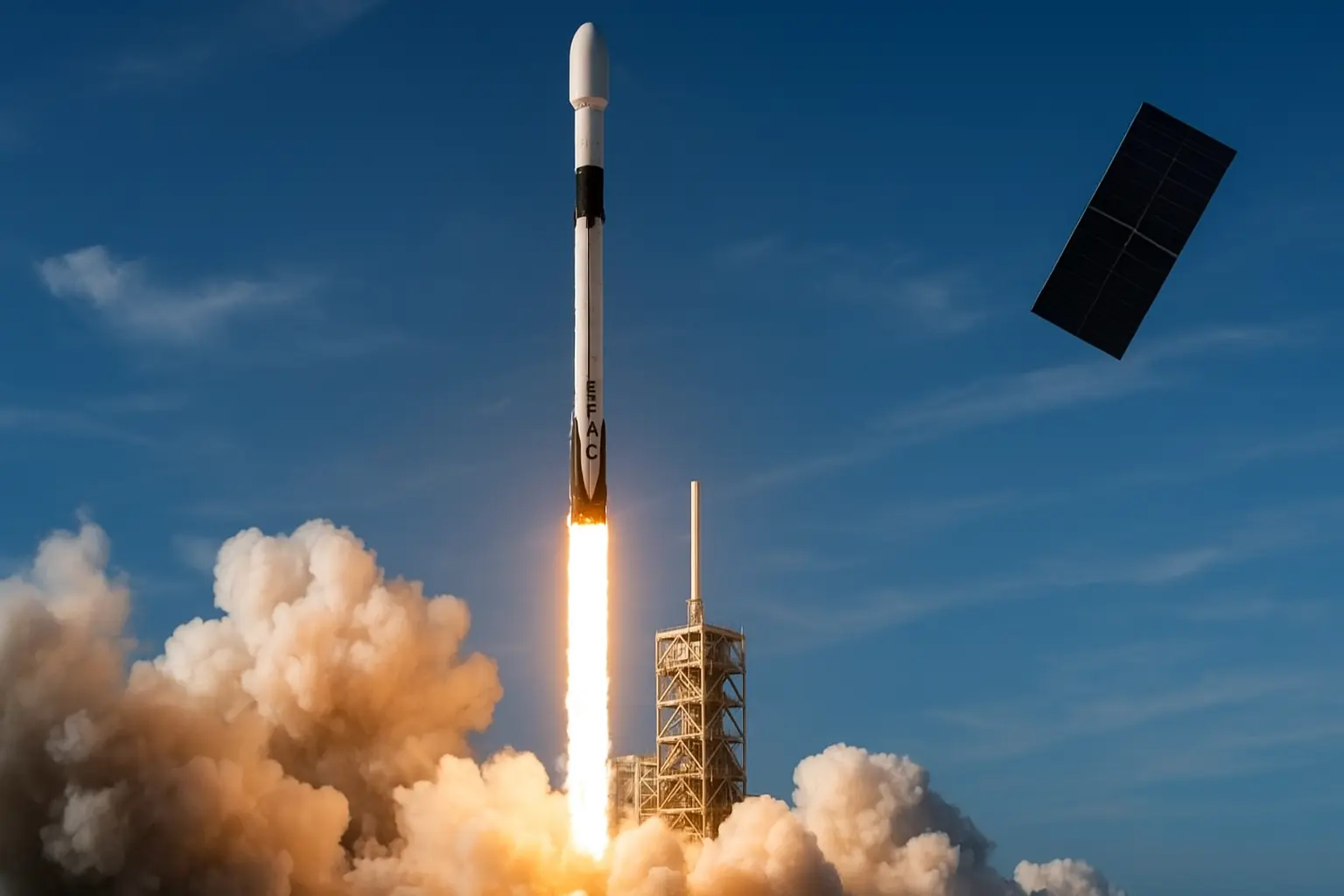CAPE CANAVERAL, Fla. — SpaceX reached a historic milestone Sunday, launching its 10,000th Starlink internet satellite into low Earth orbit (LEO), a significant achievement in the company’s ambitious plan to blanket the globe with high speed internet coverage.
The company launched 56 additional satellites aboard two separate Falcon 9 rockets, marking its 132nd orbital mission of 2025 and tying its previous annual record with more than two months remaining in the year.
According to astrophysicist Jonathan McDowell’s satellite tracking data, of the 10,000 satellites launched since 2018, roughly 8,608 are currently operational.
The rest have either reached the end of their lifespan or been intentionally de orbited, a process that burns the satellites upon reentry into Earth’s atmosphere.
The Starlink internet satellite project began with the launch of two prototype units in February 2018. By 2021, SpaceX had rolled out commercial service, offering broadband connectivity to rural and remote areas worldwide.
Each satellite has an estimated lifespan of about five years, after which it is replaced by newer, more capable models.
SpaceX, owned by Elon Musk’s Space Exploration Technologies Corp., currently has authorization from the US Federal Communications Commission to deploy up to 12,000 Starlink satellites, with plans to eventually expand that number to over 30,000.
“Reaching 10,000 launched satellites represents not just a technological milestone, but also a shift in how humanity connects to the internet,” said Dr. Lydia Chen, a space policy researcher at the University of Colorado. “However, the rapid pace of deployment also raises serious questions about long-term orbital sustainability.”
Experts view the milestone as both a triumph of engineering and a warning about the growing congestion in low Earth orbit.
“SpaceX’s achievement is extraordinary,” said Mark Andrews, an aerospace analyst with the Orbital Research Institute. “They’ve effectively demonstrated a reusable launch model that’s setting the standard for the entire commercial space sector.
But as we approach tens of thousands of active satellites, managing traffic and avoiding collisions becomes increasingly complex.”
Astronomers have voiced concerns about how large constellations like Starlink affect the night sky and astronomical observations.
Reflective surfaces on the satellites can interfere with ground based telescopes, particularly during twilight hours. SpaceX has since introduced design modifications such as darker coatings and sunshades to mitigate the issue, though scientists say more work is needed.
“There’s a balance between progress and preservation,” said Dr. Arjun Patel, a senior astronomer with the International Sky Research Foundation.
“While Starlink has revolutionized broadband access, the impact on astronomy and the orbital environment must be carefully managed.” The Starlink network now accounts for more than half of all active satellites orbiting Earth.
By comparison, Amazon’s Project Kuiper aims to deploy 3,200 satellites by the end of the decade, while China and the European Union are each pursuing their own mega constellation initiatives to compete in the global satellite internet market.
According to data compiled by the European Space Agency, the number of active satellites has more than quadrupled since 2018, driven primarily by commercial ventures.
The agency estimates there are now over 36,000 pieces of space debris larger than 10 centimeters orbiting Earth, increasing the risk of collisions.
“Space traffic management is becoming a critical issue,” said Patricia Gomez, an orbital debris specialist with ESA. “The more satellites we add, the higher the probability of cascading collisions a phenomenon known as the Kessler Syndrome.”
For many users, Starlink’s expansion represents a lifeline to reliable internet access. In rural Alaska, where terrestrial broadband infrastructure remains limited, the service has been transformative.
“Before Starlink, we relied on slow satellite links that could barely handle video calls,” said Jason Miller, a resident of Fairbanks. “Now, my kids can attend online classes and I can work remotely it’s changed our lives.”
In contrast, environmental advocates have expressed concerns about the environmental impact of frequent rocket launches and satellite reentries.
“Every launch and reentry contributes to carbon emissions and potential atmospheric pollution,” said Helena Cruz, director of the Earth Stewardship Alliance. “The benefits are real, but so are the consequences. We need stronger international regulations to ensure sustainability.”
SpaceX shows no signs of slowing down. The company plans to continue launching satellites at a record pace through 2026, upgrading its fleet with second generation Starlink satellites designed for higher bandwidth and longer lifespan.
The new models also include inter satellite laser links, allowing data to be transmitted without reliance on ground stations. Meanwhile, competitors such as Amazon’s Project Kuiper and China’s Guowang constellation are accelerating their development timelines.
Analysts believe the next five years will define the future of global broadband and determine which companies dominate the orbital communications market.
“The race to control low Earth orbit is about more than internet access,” said Dr. Chen. “It’s about geopolitical influence, data control, and long-term access to orbital resources.”
With its 10,000th Starlink internet satellite now in orbit, SpaceX stands as the undisputed leader in commercial satellite deployment.
The milestone underscores the company’s unmatched launch cadence and technological efficiency but also highlights the urgent need for coordinated international policies to address orbital crowding and sustainability.
As nations and corporations push forward with mega constellation plans, the balance between innovation and responsibility will shape not only the future of global connectivity but also the long term safety of Earth’s orbital environment.

